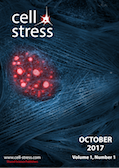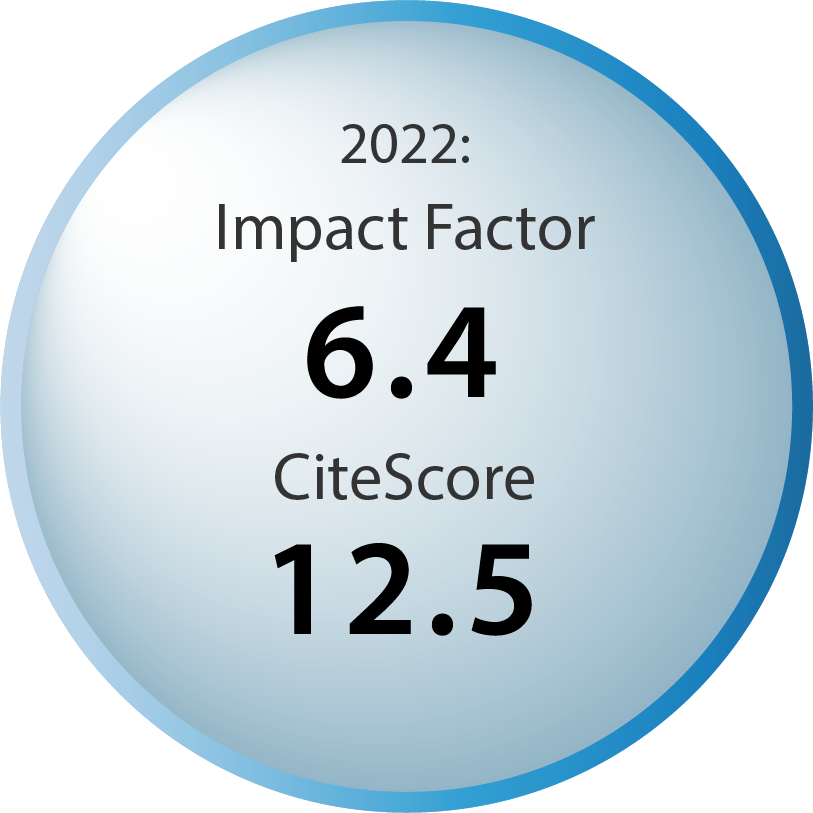The long non-coding RNA H19 – a new player in hepatocellular carcinoma
Maximilian A. Ardelt and Johanna Pachmayr
News and thoughts |
page 4-6 | 10.15698/cst2017.10.102 | Full text | PDF |
VDAC1 at the crossroads of cell metabolism, apoptosis and cell stress
Varda Shoshan-Barmatz, Eduardo N. Maldonado and Yakov Krelin
Reviews |
page 11-36 | 10.15698/cst2017.10.104 | Full text | PDF |
Abstract
This review presents current knowledge related to VDAC1 as a multi-functional mitochondrial protein acting on both sides of the coin, regulating cell life and death, and highlighting these functions in relation to disease. It is now recognized that VDAC1 plays a crucial role in regulating the metabolic and energetic functions of mitochondria. The location of VDAC1 at the outer mitochondrial membrane (OMM) allows the control of metabolic cross-talk between mitochondria and the rest of the cell and also enables interaction of VDAC1 with proteins involved in metabolic and survival pathways. Along with regulating cellular energy production and metabolism, VDAC1 is also involved in the process of mitochondria-mediated apoptosis by mediating the release of apoptotic proteins and interacting with anti-apoptotic proteins. VDAC1 functions in the release of apoptotic proteins located in the mitochondrial intermembrane space via oligomerization to form a large channel that allows passage of cytochrome c and AIF and their release to the cytosol, subsequently resulting in apoptotic cell death. VDAC1 also regulates apoptosis via interactions with apoptosis regulatory proteins, such as hexokinase, Bcl2 and Bcl-xL, some of which are also highly expressed in many cancers. This review also provides insight into VDAC1 function in Ca2+ homeostasis, oxidative stress, and presents VDAC1 as a hub protein interacting with over 100 proteins. Such interactions enable VDAC1 to mediate and regulate the integration of mitochondrial functions with cellular activities. VDAC1 can thus be considered as standing at the crossroads between mitochondrial metabolite transport and apoptosis and hence represents an emerging cancer drug target.
mIDH-associated DNA hypermethylation in acute myeloid leukemia reflects differentiation blockage rather than inhibition of TET-mediated demethylation
Laura Wiehle, Günter Raddatz, Stefan Pusch, Julian Gutekunst, Andreas von Deimling, Manuel Rodríguez-Paredes and Frank Lyko
Research Articles |
page 55-67 | 10.15698/cst2017.10.106 | Full text | PDF |
Abstract
Isocitrate dehydrogenases 1 and 2 (IDH1/2) are recurrently mutated in acute myeloid leukemia (AML), but their mechanistic role in leukemogenesis is poorly understood. The inhibition of TET enzymes by D-2-hydroxyglutarate (D-2-HG), which is produced by mutant IDH1/2 (mIDH1/2), has been suggested to promote epigenetic deregulation during tumorigenesis. In addition, mIDH also induces a differentiation block in various cell culture and mouse models. Here we analyze the genomic methylation patterns of AML patients with mIDH using Infinium 450K data from a large AML cohort and found that mIDH is associated with pronounced DNA hypermethylation at tens of thousands of CpGs. Interestingly, however, myeloid leukemia cells overexpressing mIDH, cells that were cultured in the presence of D-2-HG or TET2 mutant AML patients did not show similar methylation changes. In further analyses, we also characterized the methylation landscapes of myeloid progenitor cells and analyzed their relationship to mIDH-associated hypermethylation. Our findings identify the differentiation state of myeloid cells, rather than inhibition of TET-mediated DNA demethylation, as a major factor of mIDH-associated hypermethylation in AML. Furthermore, our results are also important for understanding the mode of action of currently developed mIDH inhibitors.
The long non-coding RNA H19 suppresses carcinogenesis and chemoresistance in hepatocellular carcinoma
Christina S. Schultheiss, Stephan Laggai, Beate Czepukojc, Usama K. Hussein, Markus List, Ahmad Barghash, Sascha Tierling, Kevan Hosseini, Nicole Golob-Schwarzl, Juliane Pokorny, Nina Hachenthal, Marcel Schulz, Volkhard Helms, Jörn Walter, Vincent Zimmer, Frank Lammert, Rainer M. Bohle, Luisa Dandolo, Johannes Haybaeck, Alexandra K. Kiemer, Sonja M. Kessler
Research Articles |
page 37-54 | 10.15698/cst2017.10.105 | Full text | PDF |
Abstract
The long non-coding RNA (lncRNA) H19 represents a maternally expressed and epigenetically regulated imprinted gene product and is discussed to have either tumor-promoting or tumor-suppressive actions. Recently, H19 was shown to be regulated under inflammatory conditions. Therefore, aim of this study was to determine the function of H19 in hepatocellular carcinoma (HCC), an inflammation-associated type of tumor. In four different human HCC patient cohorts H19 was distinctly downregulated in tumor tissue compared to normal or non-tumorous adjacent tissue. We therefore determined the action of H19 in three different human hepatoma cell lines (HepG2, Plc/Prf5, and Huh7). Clonogenicity and proliferation assays showed that H19 overexpression could suppress tumor cell survival and proliferation after treatment with either sorafenib or doxorubicin, suggesting chemosensitizing actions of H19. Since HCC displays a highly chemoresistant tumor entity, cell lines resistant to doxorubicin or sorafenib were established. In all six chemoresistant cell lines H19 expression was significantly downregulated. The promoter methylation of the H19 gene was significantly different in chemoresistant cell lines compared to their sensitive counterparts. Chemoresistant cells were sensitized after H19 overexpression by either increasing the cytotoxic action of doxorubicin or decreasing cell proliferation upon sorafenib treatment. An H19 knockout mouse model (H19Δ3) showed increased tumor development and tumor cell proliferation after treatment with the carcinogen diethylnitrosamine (DEN) independent of the reciprocally imprinted insulin-like growth factor 2 (IGF2). In conclusion, H19 suppresses hepatocarcinogenesis, hepatoma cell growth, and HCC chemoresistance. Thus, mimicking H19 action might be a potential target to overcome chemoresistance in future HCC therapy.
Fumarase mediates transcriptional response to nutrient stress
Qin Zhao and Yuhui Jiang
Microreviews |
page 68-69 | 10.15698/cst2017.10.107 | Full text | PDF |
Abstract
Limited supply of nutrient normally causes cell growth arrest. Our recent study (Nat Cell Biol. (7):833-843) shows that fumarase (FH), a key enzyme responsible for the conversion between fumarate and malate in tricarboxylic acid cycle, is importantly involved in the cellular response to nutrient condition.
Senescence explains age- and obesity-related liver steatosis
Mikolaj Ogrodnik and Diana Jurk
Microreviews |
page 70-72 | 10.15698/cst2017.10.108 | Full text | PDF |
Abstract
Cellular senescence, the irreversible loss of replicative potential of somatic cells, was first described in fibroblasts cultured in vitro by Leonard Hayflick more than 50 years ago. Since then, the field of cellular senescence has witnessed a meteoric rise, with multiple studies highlighting its importance in varied physiological contexts such as cancer, development and ageing. A major recent development in the senescence field has been the creation of mouse models which allow the specific elimination of senescent cells. These genetic tools have allowed scientists, for the first time, to conduct proof-of-principle investigations into the causal impact of senescence during the ageing process and in the context of several age-related diseases. Furthermore, these experiments provided the rationale for the development of a new class of drugs named “senolytics”, that can specifically kill senescent cells, which are now of great interest to academics and pharma companies alike. Non-alcoholic fatty liver disease (NAFLD) is more prevalent in the older and obese population and unrelated to alcohol consumption. It can be characterized by simple liver fat accumulation (steatosis) but it can progress to more severe stages such as non-alcoholic steatohepatitis (NASH), advanced fibrosis, cirrhosis and hepatocellular carcinoma (HCC). Previous studies have demonstrated that during ageing and NAFLD, hepatocytes accumulate markers of cellular senescence. However, until now, it was unclear whether senescence was a cause or consequence of liver disease.



